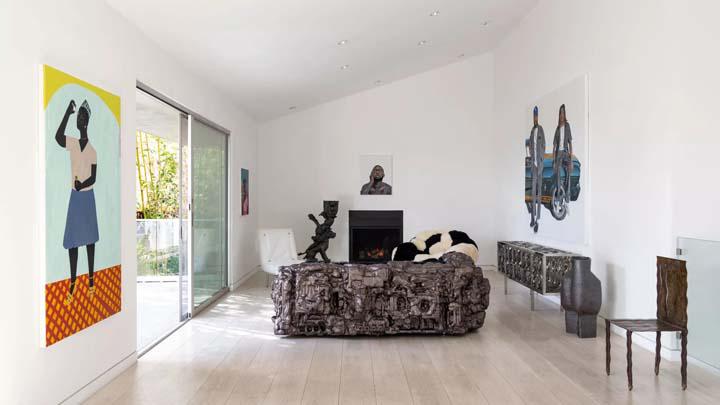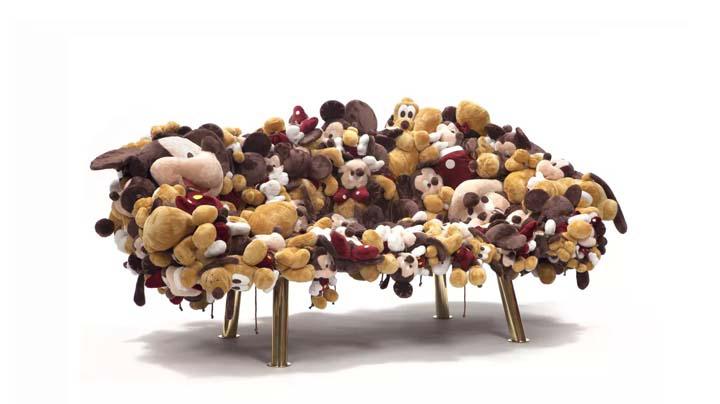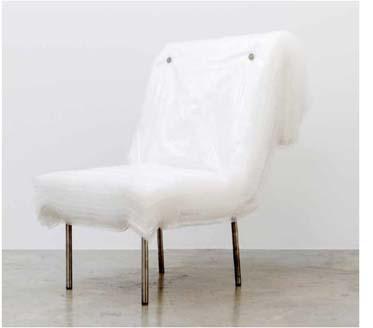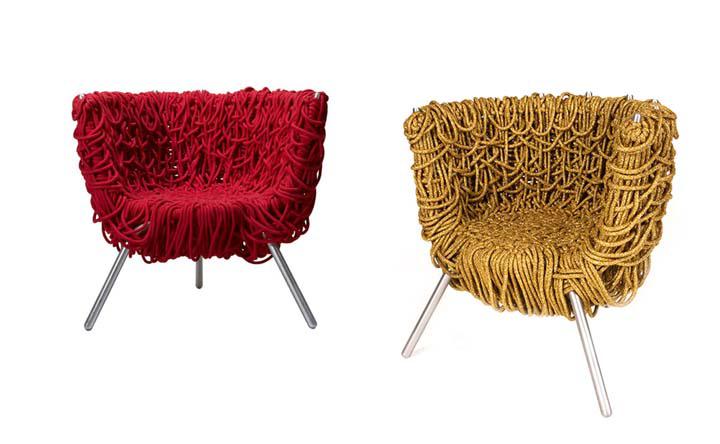Celebrating the Campana Brothers in LA
The exhibition Cine São José: 35 Years of Estúdio Campana, opening this week at Friedman Benda’s LA outpost, was planned before Fernando Campana passed away last fall, but it’s become an homage to him, and to the legacy of Estúdio Campana. For over 35 years, the brothers Fernando and Humberto pushed the boundaries of furniture design by combining unlikely, often found materials, with an innovative look at Brazilian culture and craft traditions, becoming international stars of contemporary design in the process. The exhibition is presented in conjunction with Frieze L.A. and continues through April 15.
Fernando, trained as an architect, founded Estúdio Campana with his brother Humberto in 1984 in Brotas, outside São Paulo. Together, the brothers combined their disruptive design practice and an approach that merged furniture-making with social outreach. The Favela chair (below right) for example, celebrates the scrappy, hammered-together character of the shanty towns Rio is widely known for. A street vendor’s array of children’s stuffed animals inspired a much-loved collection using plush toys stitched together as upholstery, as with the ‘Disney’ sofa (2009, above), which recontextualises unexpected materials with humor and a surrealist quality.
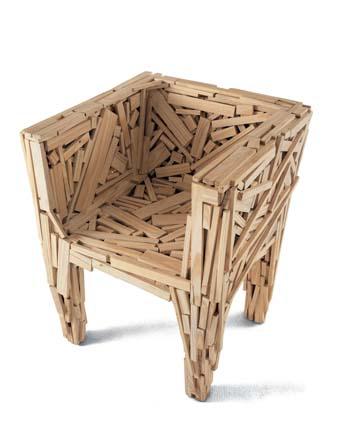
Exploring personal expression and everyday materiality, the ‘Yanomami’ is named after and honors the indigenous people from the northwest of Brazil. Perforations made with a blow torch reference the meandering lines that the Yanomami paint on their bodies. Their work reflected “the beautiful chaotic subtlety of the Brazilian spirit,” the artist Vik Muniz wrote when he interviewed the brothers for Bomb magazine in 2008.
“I had read somewhere that the soil in the Mediterranean is made almost entirely of plastic, that there’s no more organic soil left,” Fernando told Mr. Muniz. “Imagine a plant growing out of plastic. Then we made an ironic game of it. Lounge or parlor chairs were originally made of wicker, for ventilation and lightness, but then the wicker was replaced with metal, then braided plastic string, and, finally, cheap and ugly plastic-injection molding. Our project was a counterattack: wicker overtaking everything like a parasite, and trying to regain its place through prostheses, hybridism, and the joining together of the chairs. These are objects that somehow tell their own story, a mutant evolution," he continued.
There was the time the Campana brothers sent their Bubble Wrap chair (left), packed in a box in bubble wrap, to a show in Rio de Janeiro. As they told Wallpaper magazine in 2020, “When we arrived to check on the exhibition, the chair was absolutely destroyed. The crew who received it kept on peeling off the sheets, looking for the chair! Luckily it was an easy fix, as all we had to do was run to the office supplies store and replace the plastic sheets.”
Monica Mazzei, Vice-President of Estudio Campana's long-term collaborator Edra, said: 'I met the Campana brothers with the Vermelha, an armchair made of rope, 500 meters woven by hand (below). The following year Vermelha was presented at the Milan Furniture Fair in 1998 and in October it was exhibited at MOMA in NY. Our collaboration started like this and has been going on for 25 years. It has produced unique pieces with a strong character, which always surprise. They are not born from the design, but are expressed through the material with which they are made. They have a soul and always carry a lot of Brazil with them.
The exhibition title, Cine São José, references the cinema in the Campana brothers’ hometown, Brotas, where they spent a significant part of their youth, as the silver screen was their main window to the world. The show is a chronology, tracing iconic works, that are not only imbued with local, social, artistic, and personal contexts, but show what in the words of Deyan Sudjic calls the “recalibration” of objects of contemporary design.
Friedman Benda, 8260 Marmont Ln, Los Angeles, CA Info



